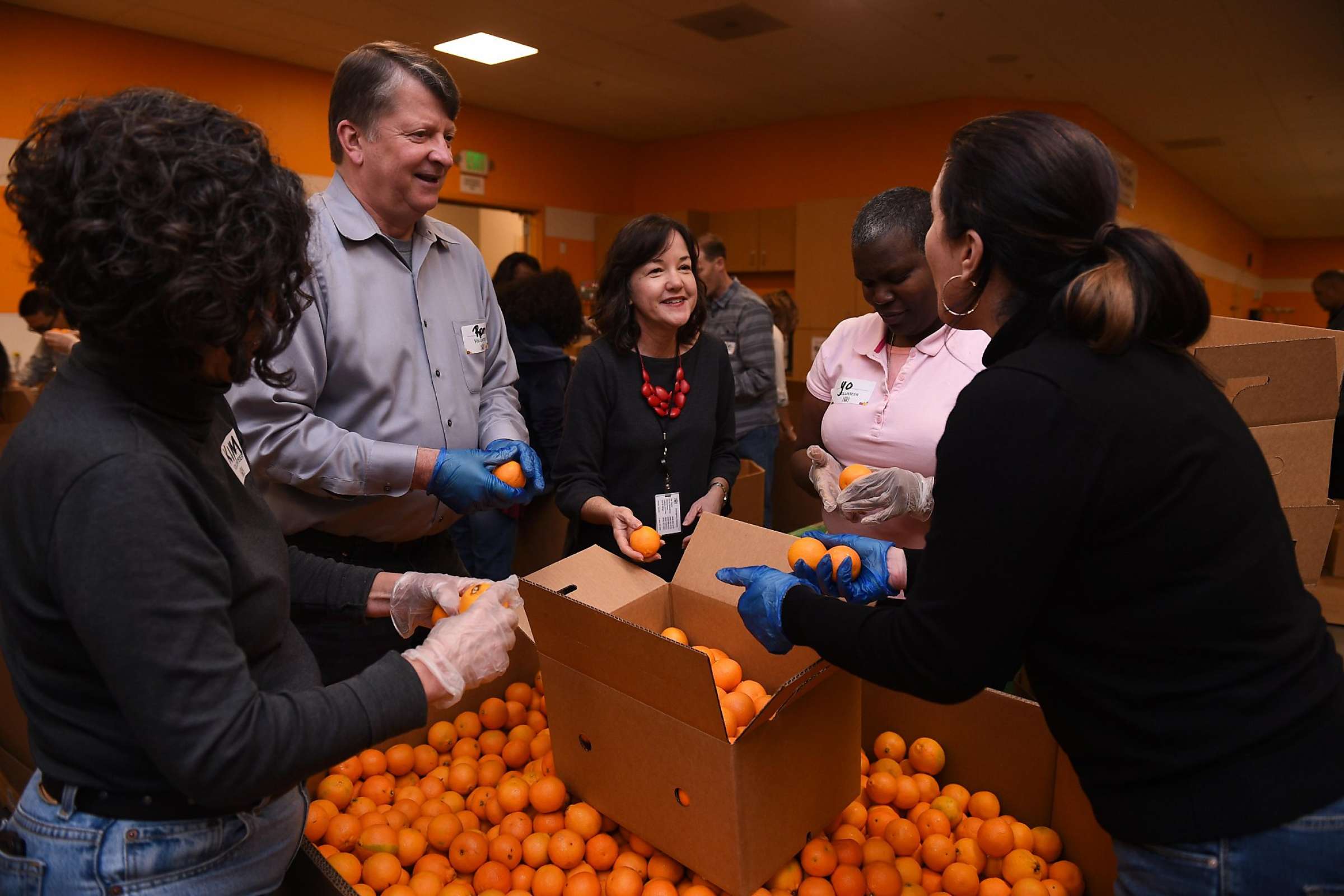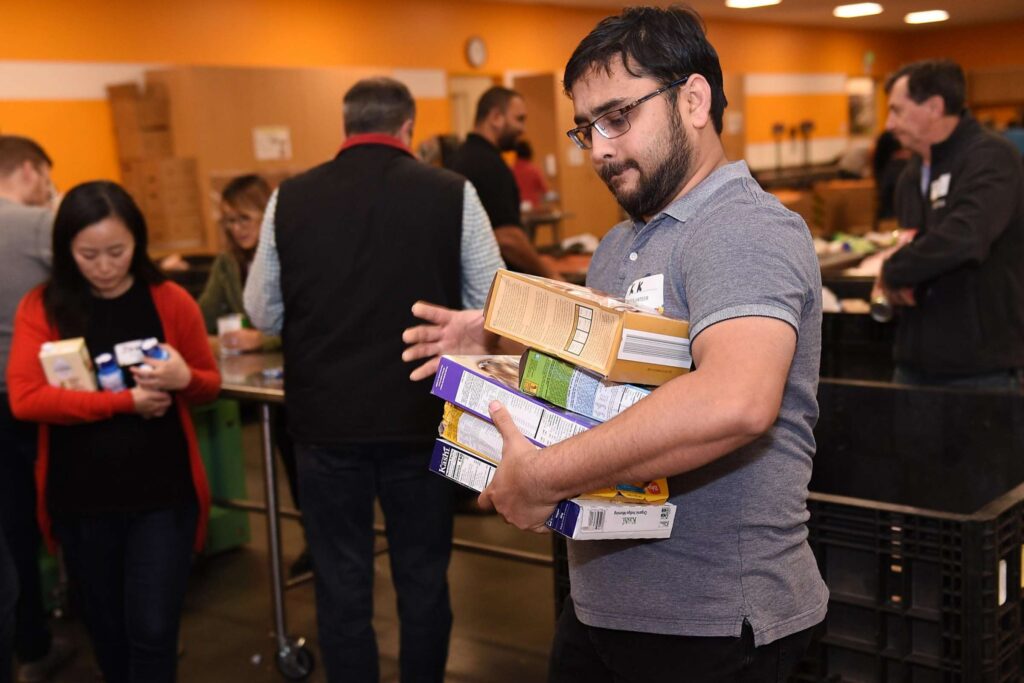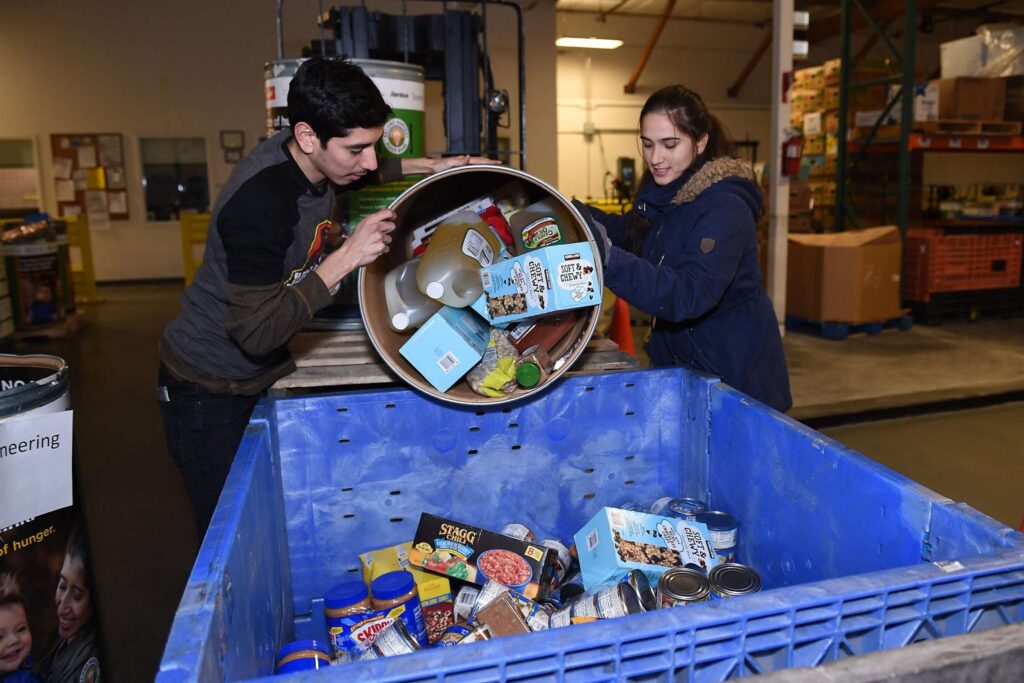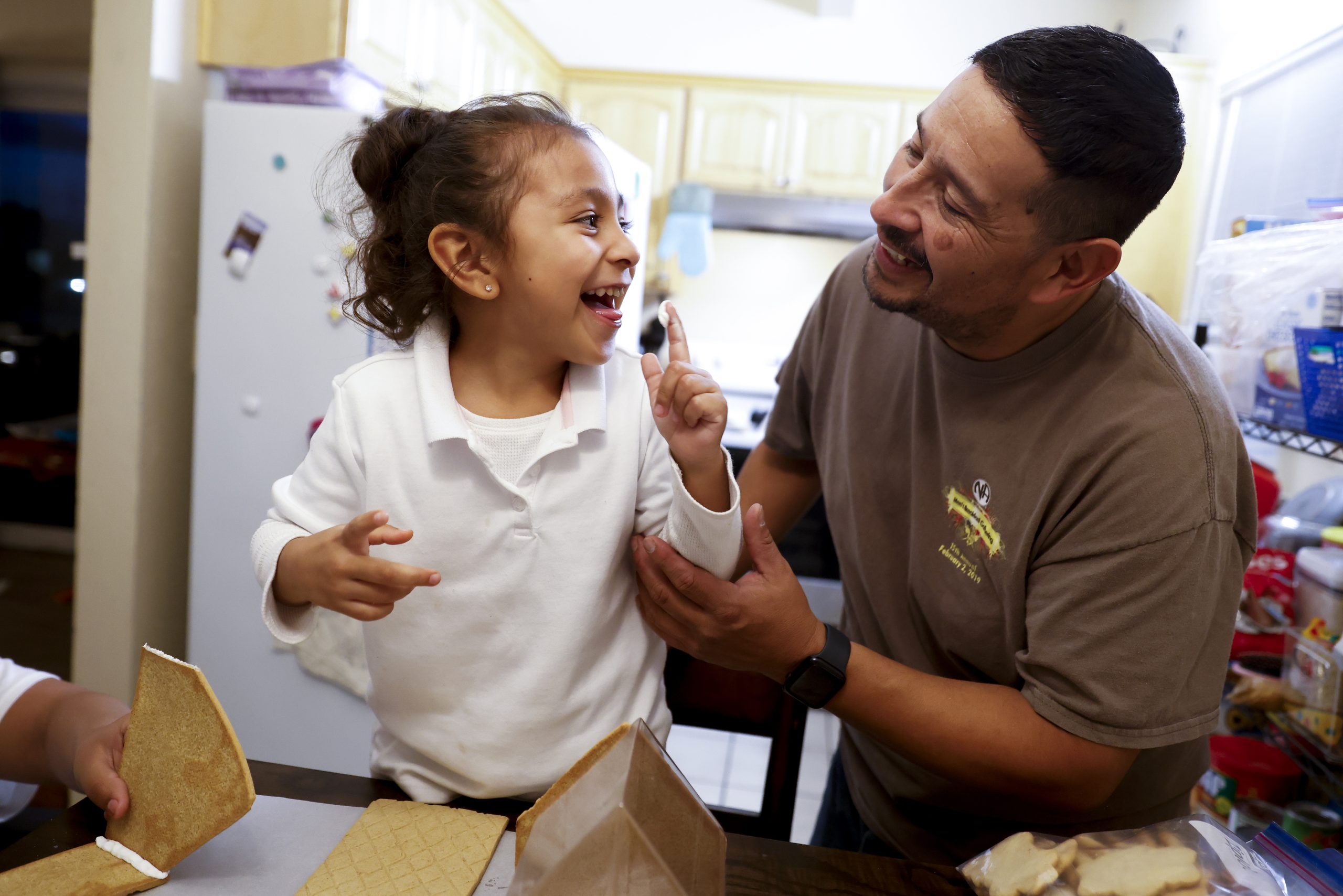Amid the millionaires and billionaires of Silicon Valley, the working poor and cash-strapped college students struggle to pay ever-increasing rent, leaving little left over for food.
And, increasingly, they are turning to Second Harvest Food Bank for help.
These workers, many with two jobs, and college kids with full course loads have upended the image of the hungry, said Leslie Bacho, Second Harvest chief executive.
“More and more of the people we see are working,” she said. “What we see is for so many people, especially outside the tech sector, wages have been relatively flat.”
Despite low unemployment and a relatively strong economy, food banks are seeing an increasing number of clients every year, with 260,000 people currently served by Second Harvest in Santa Clara and San Mateo counties each month.
“Unfortunately for so many of the people we serve, things have not gotten that much better,” Bacho said. “Often food is the first to go when you’re trying to pay your medical bills, or you want to stay housed.”
For 32 years, The Chronicle’s Season of Sharing fund has contributed to Second Harvest and other Bay Area food banks, providing a total of $21 million to help provide meals to needy individuals and families.
It’s money the food banks can count on year after year, Bacho said.
“Since the fund started, it has provided over $5 million to Second Harvest,” she said, adding that’s the equivalent of 10 million meals. “Knowing that you have funders you can count on year after year really helps us for our planning.”
But the food banks still have had to get creative to be able to serve the wide range of people in need.
To better help students, Second Harvest has opened food pantries in 10 community colleges and at San Jose State University.
“So many of the students are struggling to afford rent, tuition and still have leftover (money) for food,” Bacho said. Once the word got out, she said, the students started coming. “It has been surprising to me the success of having distribution on these college campuses,” she said.

Lauren Cook was working four jobs while attending San Jose State when she first saw a flyer for the on-campus food pantry. She and her roommate started going once a month, filling their refrigerator and cupboards with rice, eggs, milk, fruit, vegetables and even the occasional whole chicken.
The food allowed her to cut back on work hours some and eat healthy meals.
A college student “shouldn’t have to live off Ramen and crap food,” she said.
Cook graduated in 2017 and now is working at a Sunnyvale tech startup, where she’s running a food drive for Second Harvest, “to thank them for all the help they’ve given me.”
Meanwhile, with the cost of housing skyrocketing, a family of four in Santa Clara County earning $94,450 or less is considered low-income by the federal government — meaning many people with jobs need help putting food on the table.
Second Harvest adjusted schedules to serve working families, opening more pantries on the weekends and in the evenings.
All told, the food bank distributes 66 million pounds of food each year — the equivalent of 55 million meals.
Second Harvest has also gotten creative in finding alternative sources of food, with volunteers hitting up 100 Starbucks stores each day to pick up salads, sandwiches, protein boxes and other items with a limited shelf life to distribute to shelters and other locations.
But even with donations of food, the food bank has to raise $40 million annually to back fill the need — purchasing milk, eggs, chicken.
About a quarter of the food distributed is purchased, Bacho said.
Last year, the Season of Sharing Fund distributed $1.3 million to Second Harvest and other food banks in the nine Bay Area counties to buy fresh produce and healthy food.
Of the money raised by Season of Sharing each year, 15 percent of the fund’s annual proceeds go to the food banks.
The rest of the Season of Sharing funds are provided to individuals throughout the region who have urgent needs — a month of rent, tires for a car, furniture or money for medical expenses.
For the food banks, however, the Season of Sharing is putting food on tables in Silicon Valley and communities across the region, Bacho said.
“We’re always thinking about how to reach the people who haven’t needed us before,” she said. “It’s becoming an impossible place to live.”


Reach Jill Tucker: jtucker@sfchronicle.com

At Season of Sharing Fund, we believe that an unexpected financial crisis should never mean losing your home. Preventing homelessness isn’t just kind—it’s also the most effective way to keep our communities thriving. 100% of your donation keeps Bay Area residents housed, cared for and nourished.






